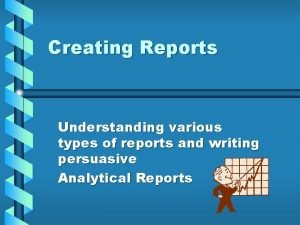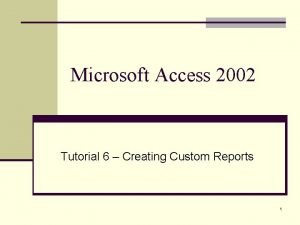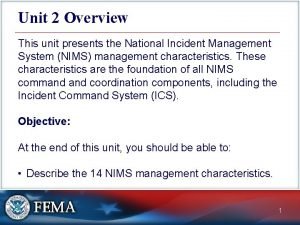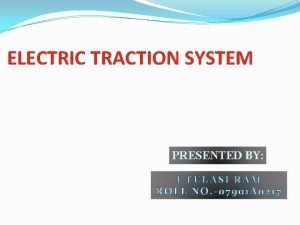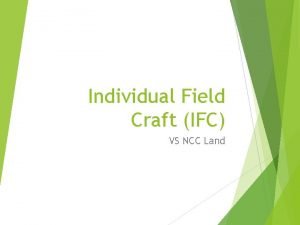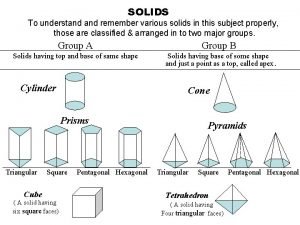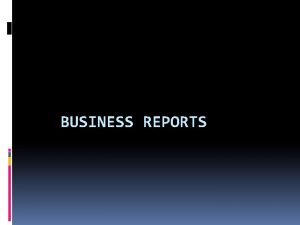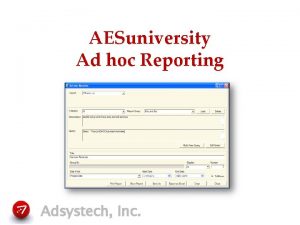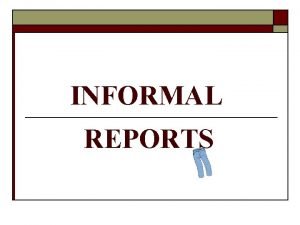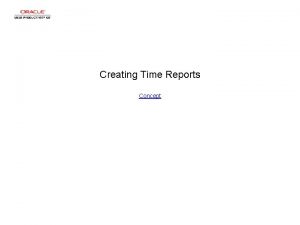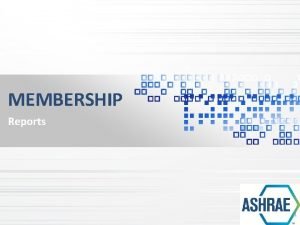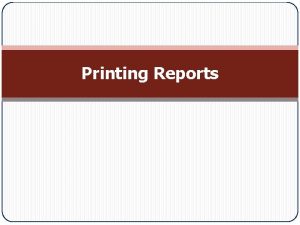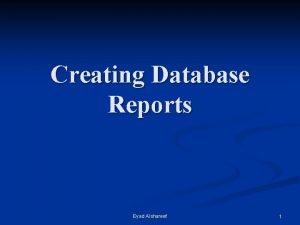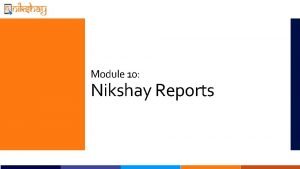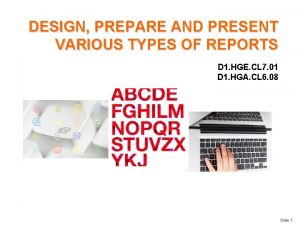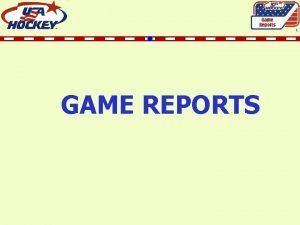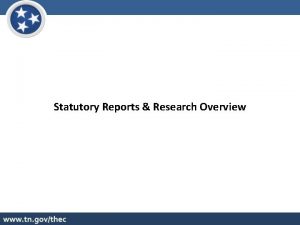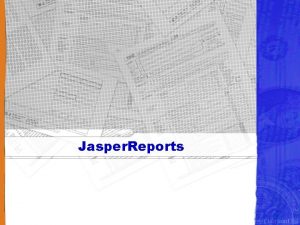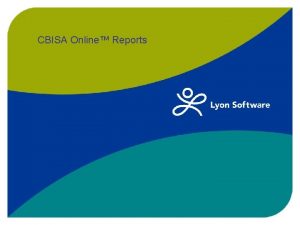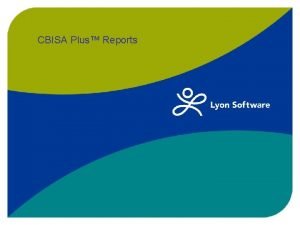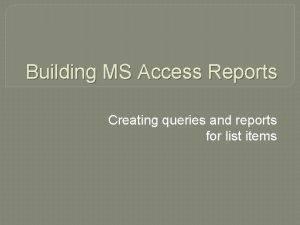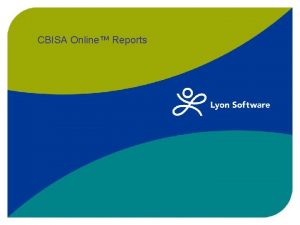Creating Reports Understanding various types of reports and
















- Slides: 16

Creating Reports Understanding various types of reports and writing persuasive Analytical Reports

Differentiating Informal/Formal Reports b Audience formality Analysis - yields info on • How familiar is audience with topic? – Regular contact: informal (not chatty/personal) – not necessary to document extensively – No regular contact: formal (background/history) – documentation vital to persuasiveness – standard sections needed (front matter, etc. ) – more info repeated throughout

Purpose & Characteristics b To report info – daily activities, meetings, trips, conferences, progress on projects b To analyze info – data for decision making or lab/field studies b To persuade readers to consider analysis and accept recommendations

Sequence of Info b Overview – states purpose and/or problem b Background – when needed, presents info about methods of investigation, material & equipment use b Results – presents results of research (discussion later) b Discussion – explains or justifies conclusions or recommendations; not included in informal report b Recommendation – makes clear recommendations for resolving problem; stems logically from evidence (data)

Informal Reports b Task reports – recommendation or justification (defends a suggestion or solution such as equipment purchase or changes in procedures); inspection/examination – records observable details (often on a form) b Periodic Activity – daily, weekly, etc. (supervisors/managers describe work completed); can be basis for projections, changes in project design, etc.

Informal Reports – cont’d b b Progress Report – summarize progress, status & projections related to a specific project; aka status or interim reports; includes description of project/purpose, work completed, in-progress & to-becompleted Meeting Minutes – record of proceedings Trip and Conference Reports – review & evaluate activities; establish priorities To File Reports – document ideas or actions for future reference; conversations, discussions, directives concisely documented

Formal Reports Sections b Front Matter – all that precedes body of Report • • title page letter of transmittal table of contents table of illustrations/figures • abstract/executive summary

Body of Formal Report b Begin on Page 1: • background to problem • literature search/ primary: secondary • approach, method & materials (experiments, surveys) • working definitions* • results: data/findings • discussion • conclusion • recommendations

Define the Problem b What is most important problem to be solved? Why? b Don’t assume reader sees it your way. phrase it as a neutral question define it concretely and precisely (not abstractly) define all terms critical to report b Specific cause(s) and effect(s), short & long-term what is wrong? what caused it to go wrong? when did it go wrong?

Suggest and evaluate possible solutions b What are potential solutions? b Do they involve cost, actions, revised theories? b What elements are common to all possible solutions? b How are possible solutions different? b Which can be eliminated right away (too costly, beyond the scope of the report)

Outline best course of action b Explain why/how course of action recommended solves problem and accounts for ALL stated causes better than other alternatives b Show the course of action is practical b Anticipate relevant problems/objections readers may have b Specify individuals or agencies that need to take action

Organization Chronological explain processes, setting up a new procedure to solve problem Spacial describe objects or locations Cause and Effect arrange in descending or ascending order depending on purpose Comparison and/or Contrast advocate a new approach based on research

End Matter (follows body of report) b Appendixes -present info that would interrupt flow of report: consider purpose, audience, task; label & title each item • • • formulas for calculations survey forms interview questions transcripts related correspondence references for further reading

End Matter - Cont’d • Glossary -mini-dictionary – consistency in itals or asterisks – placement may vary (see purpose/audience) consider how your readers will use/need definitions

End Matter - Cont’d b List of Symbols, List of Abbreviations • define special symbols, signposts • use standard abbreviations but avoid overuse – try to avoid if possible

End Matter - Cont’d b Footnotes, Sources Cited, Works Cited or References, Annotated Bibliography • • • document sources internally and at end select format appropriate for discipline/profession include a Words Cited for all outside sources used (not just consulted) in the Report • Note: Cite any unoriginal info, stats, facts, and visuals internally and on reference page
 Various types of reports
Various types of reports Access 2002
Access 2002 Is a report formal or informal
Is a report formal or informal Nims integrated communications
Nims integrated communications Arno converter converts
Arno converter converts Ifc ncc
Ifc ncc Classification of cutting tool materials
Classification of cutting tool materials A pentagonal pyramid base 25mm side and axis 50mm long
A pentagonal pyramid base 25mm side and axis 50mm long Maintenance of records and reports in obg
Maintenance of records and reports in obg Describing visual data
Describing visual data Types of business reports
Types of business reports Types of ad hoc reports
Types of ad hoc reports Accenture delivery suite is our standard
Accenture delivery suite is our standard Accenture delivery tools for reporting
Accenture delivery tools for reporting Informal report example
Informal report example Contrived experiences and their various forms
Contrived experiences and their various forms Techniques in summarizing variety of academic text
Techniques in summarizing variety of academic text
